Creator monetization tools have altered the map of building sustainable careers in 2025. Smart creators now build actual businesses with more ways to earn from content than ever before .
The digital world no longer belongs to celebrities alone. Micro influencer marketing thrives as brands seek smaller creators with loyal, engaged audiences . Creators who use tools like Shop The Look see a 33% higher average order value and a 21% lift in conversion rates . Platforms like Popshoplive change the game by giving creators 20-50% margins—2 to 5 times more than traditional affiliate programs .
Here’s what stands out: Only the top 5% of creators earn enough from brand deals to make a living . Yet platforms like Amazon Associates show how available monetization has become, with over 900,000 members making up nearly half the affiliate market . Many creators overlook their email list’s potential, which often brings the highest conversions .
My experience helping creators direct this complex digital world has led me to compile 15 monetization tools that deliver consistent results. Platforms like Rupa offer a simple way to turn followers into paying customers through digital products. This gives you total control over your income stream without depending on unpredictable algorithms.
YouTube Partner Program
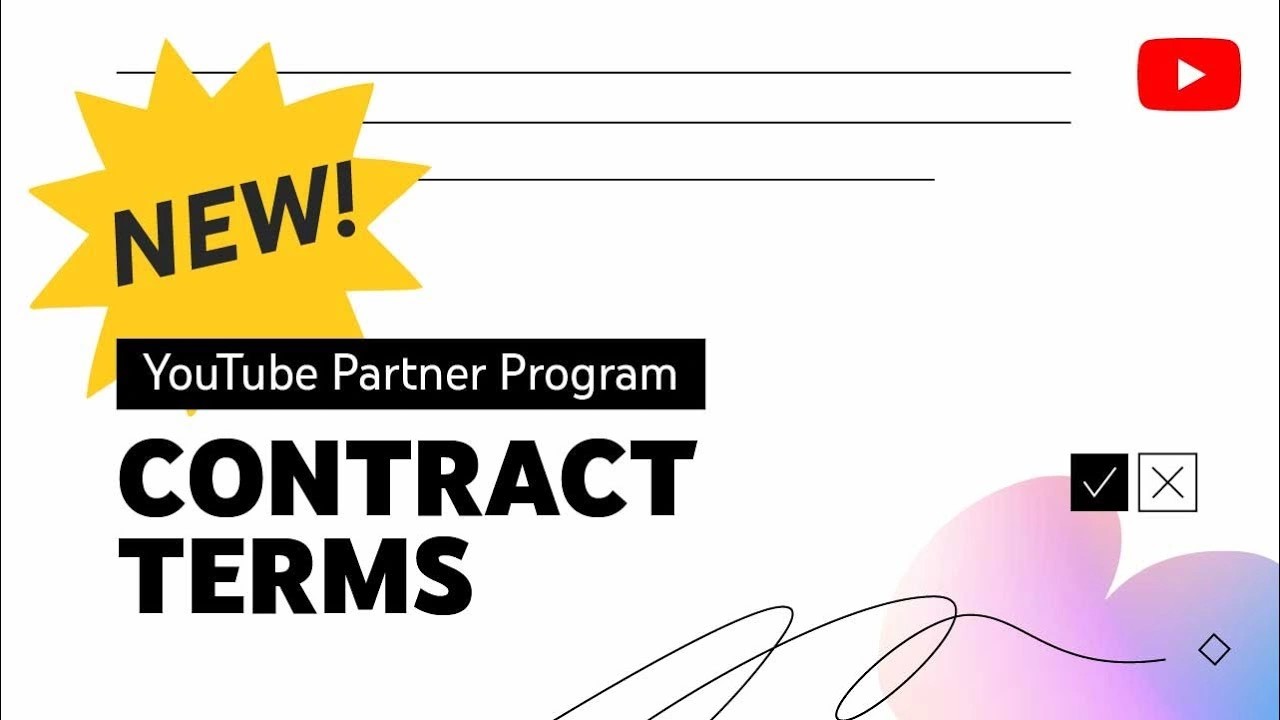
Image Source: YouTube
The YouTube Partner Program has been 16 years old since its 2007 launch and remains one of the most powerful monetization tools for video creators. More than 3 million channels have built environmentally responsible businesses through this program by sharing advertising revenue [1].
What is YouTube Partner Program
The YouTube Partner Program (YPP) helps creators earn money from their content through multiple revenue streams. YouTube has distributed an impressive $70 billion to creators, artists, and media companies since 2021 [2][3]. This makes it one of the most rewarding creator monetization platforms accessible to more people. New creators can join after reaching specific eligibility thresholds: 500 subscribers with 3 valid uploads in the last 90 days plus 3,000 watch hours or 3 million Shorts views [4]. Complete monetization access requires 1,000 subscribers with either 4,000 watch hours or 10 million Shorts views [4].
Key Features of YouTube Partner Program
The program provides several monetization tools for creators beyond simple ad revenue:
- Diverse Revenue Streams: Creators earn from watch page ads, Shorts feed ads, YouTube Premium revenue sharing, channel memberships, and fan-funding features like Super Chat [2]
- Creator Support: The core team provides guidance on policy issues, account management, and performance analysis [3]
- Content Protection: Content ID system protects your original videos from unauthorized use [5]
- Community Benefits: Partners get exclusive events, creator collectives, and networking opportunities [3]
Partners also receive advanced analytics that help them track performance and optimize their monetization strategies.
Pricing of YouTube Partner Program
YPP membership is free, but revenue sharing is a vital component. Creators receive 55% of advertising revenue from long-form videos, while YouTube retains 45% [3]. For Shorts, creators earn 45% of allocated revenue based on their view share [6].
These numbers look impressive, yet algorithm dependency remains a challenge for many creators. Platforms like Rupa offer a different approach—creators can build digital products directly from their content without algorithm concerns. Rupa provides stable monetization through courses and digital products under your control, unlike YouTube’s view and engagement-based income model.
TikTok Creator Fund
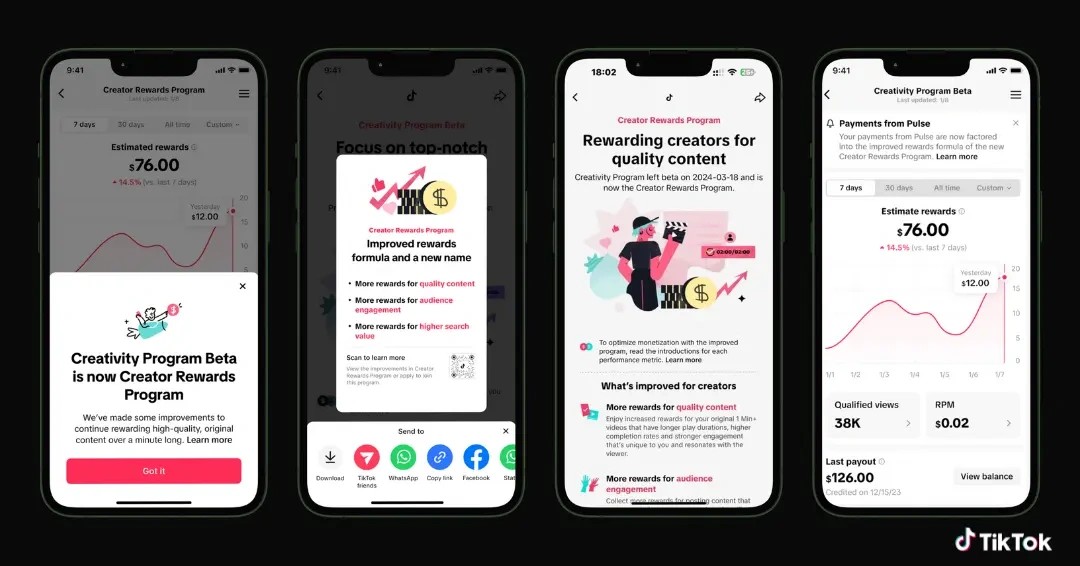
Image Source: Fourthwall
TikTok launched its monetization tools in 2020 through the Creator Fund. The platform set aside $200 million to reward creators who made engaging content [2]. This commitment grew as TikTok pledged to expand the fund to $1 billion over three years [2].
What is TikTok Creator Fund
The Creator Fund works as a money pool that pays creators for their original content. Unlike traditional ad revenue sharing programs, TikTok rewards creators based on several factors. These include view counts, engagement metrics, and how authentic their content is [7][7].
The program has changed quite a bit. Many regions now use the Creator Rewards Program instead of the original Creator Fund as of 2024 [8]. This new program offers substantially higher payouts and better ways to earn [2].
Key Features of TikTok Creator Fund
Creators must meet these requirements:
- 10,000 real followers [9]
- 100,000 video views within 30 days [9]
- Age requirement: 18+ (19+ in South Korea) [8]
- Must live in eligible countries (US, UK, Germany, France, Italy, Spain started first, then Brazil, Japan, South Korea joined) [2][8]
- Account must follow TikTok’s community guidelines [9]
Creators get their payments within 30 days after each monthly period. They need at least $50 to cash out [9]. The original Creator Fund got a lot of criticism because payouts were too low and unpredictable. The new Creator Rewards Program fixes this by rewarding longer, better quality content [2].
Pricing of TikTok Creator Fund
Creators earned about $0.02 to $0.04 per 1,000 views [2][2] with the original Fund. This meant a video with a million views would only make $20-$40 [10]. Not much unless you went viral often.
The Creator Rewards Program changes everything. Creators can now earn $4.00 to $8.00 per 1,000 views [2]. Videos with a million views can bring in $100 to $600 normally. This is a big deal as it means that earnings could top $1,000 per million views when engagement peaks [2].
Both programs still have their limits. They depend too much on TikTok’s algorithm for income. That’s why successful creators use platforms like Rupa to build steady income through digital products. This helps them turn followers into customers without worrying about changing view counts or platform rules.
Instagram Live Badges

Image Source: Variety
Instagram launched Live Badges in 2020 to help creators make money while streaming. The feature came right after live streaming jumped by 70% during the COVID-19 pandemic [11].
What is Instagram Live Badges
Live Badges work like virtual tips viewers can buy to support their favorite creators during broadcasts. These monetary gifts let fans show love for content they enjoy [11]. A heart icon shows up next to the username in comments after someone buys a badge. This makes their support visible to everyone watching the stream [3]. Creators looking to earn money on the platform can use badges to monetize their live content without needing brand deals.
Key Features of Instagram Live Badges
The platform has set these eligibility rules:
- You must be 18 years old [3]
- You need a business or creator account [3]
- Your account should meet Instagram’s Partner Monetization Policies [3]
- US creators need at least 10 followers [4]
Creators get paid after reaching the $100 threshold. The money usually hits their bank account within 1-7 business days [4]. Badge holders stay on a creator’s supporter list for 90 days. This makes it easy to spot loyal fans [4].
Pricing of Instagram Live Badges
The badges come in three price levels:
Creators take home 100% of badge revenue after taxes and platform fees [12]. Instagram doesn’t take a cut, even though Google and Apple charge 30% on in-app purchases [4][12].
Fans can buy multiple badges during one live stream, but there’s a limit of $250 per live video [4]. This limit helps comply with digital gifting rules.
Badge income depends on the platform, just like other social media money-making features. Tools like Rupa give creators more control by helping them turn followers into customers through digital products instead of relying on platform features that might change.
Facebook Ad Breaks
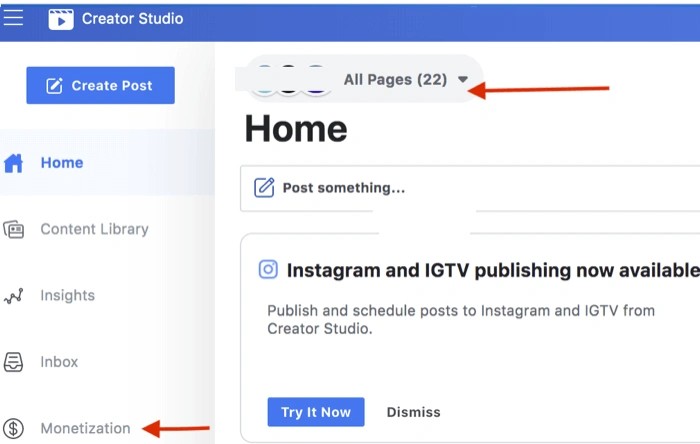
Image Source: Social Media Examiner
Video creators can now generate stable revenue through Facebook Ad Breaks, a powerful monetization tool that enables publishers to embed advertisements in their videos. This feature has become essential to broaden income sources, especially for content creators.
What is Facebook Ad Breaks
Facebook Ad Breaks consist of short advertisements placed at strategic points within videos. These ads appear in three formats: pre-roll (before the video starts), mid-roll (during the video), and post-roll (after the video ends), along with image ads [13]. Content creators receive a portion of the ad revenue each time these ads play in their content [14]. The program currently allows qualified Pages to earn money from longer video content by leveraging their existing audiences.
Key Features of Facebook Ad Breaks
Eligibility requirements include:
- (some regions test a 1,000 follower minimum) 10,000 followers[15]
- 600,000 total minutes viewed in the last 60 days [1]
- At least five active videos on your Page [1]
- Videos must be at least 3 minutes long to monetize [15]
Eligible creators can insert ad breaks during any live video that reaches 300+ concurrent viewers [14]. The first ad break becomes available after 4 minutes of live streaming, and creators can add more breaks every 5 minutes [14].
Pricing of Facebook Ad Breaks
The revenue split stands at 55/45—creators earn 55% of all generated ad revenue [16]. CPM rates (cost per thousand views) usually fall between $2.00-$5.00, with some premium markets like the US reaching $10.00+ [16].
Here’s what you could earn:
- 10,000 views: $20-$50
- 100,000 views: $200-$500
- 1 million views: $2,000-$5,000 [1]
The Facebook Ad Breaks program will cease operations on August 31, 2025 [17]. Smart creators are already moving toward platform-independent solutions like Rupa. This tool helps convert followers into paying customers through digital products without depending on changing platform policies or revenue sharing models.
Patreon
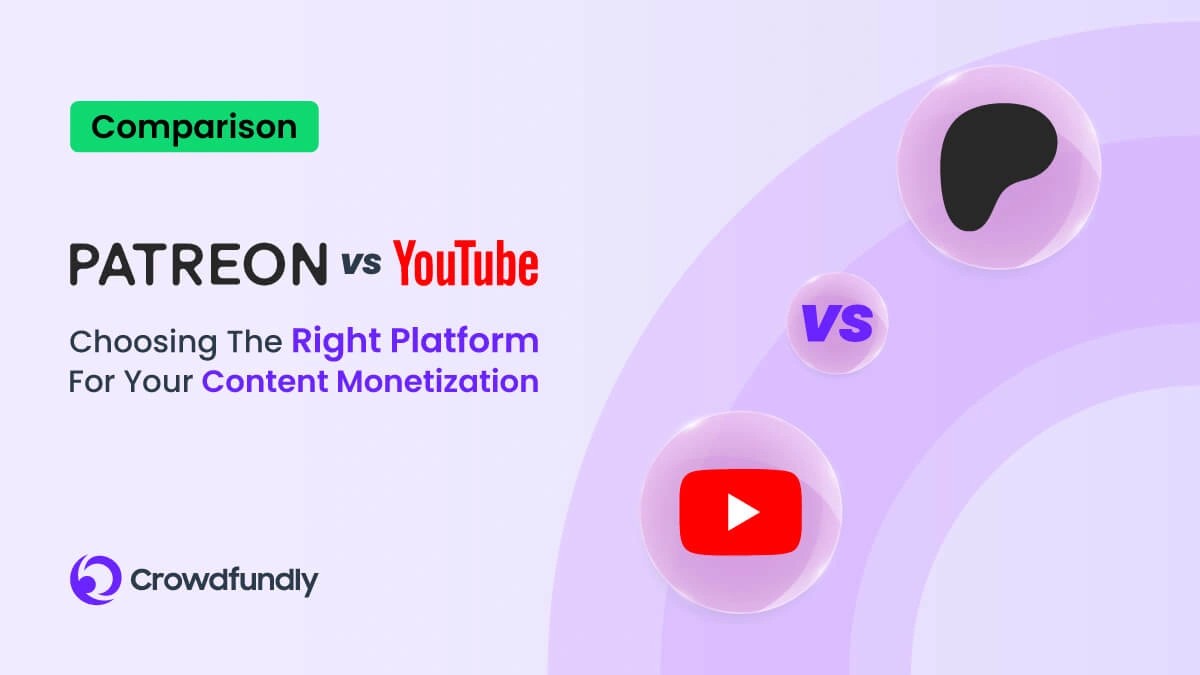
Image Source: Crowdfundly
Patreon has emerged as a standout membership-based solution among creator monetization platforms. Since 2013, it has helped creators build steady income through direct fan support.
What is Patreon
The platform works on a subscription model that lets fans become “patrons.” These patrons support creators through monthly payments and receive exclusive content and perks in return [18]. This approach moves away from single purchases to long-term support and builds direct connections between creators and their loyal followers [19]. Content makers in any discipline—from podcasters and musicians to writers and videographers—rely on Patreon to create steady revenue streams [6].
Key Features of Patreon
The platform provides creators with valuable tools:
- Multiple tier options with customizable pricing and benefits [5]
- Native video hosting (up to 100 hours/month for creators with paying fans) [20]
- Community features through chats, polls, and comments [20]
- Growth analytics and audience insights [18]
- Direct messaging with fans [18]
- Email newsletter capabilities [21]
Patreon lets creators build communities away from ad-based ecosystems [18].
Pricing of Patreon
The platform takes a 10% platform fee from processed payments [20]. Creators also need to consider:
- Payment processing fees (typically 2.9% + $0.30) [20]
- A 2.5% currency conversion fee for international transactions [20]
- No upfront costs—fees apply only when earnings start [21]
Platforms like Rupa give creators options with lower fees and more control. These alternatives help turn followers into paying customers through digital products without giving up much of their earnings. Many creators start with Patreon before developing their own monetization systems.
Amazon Influencer Program
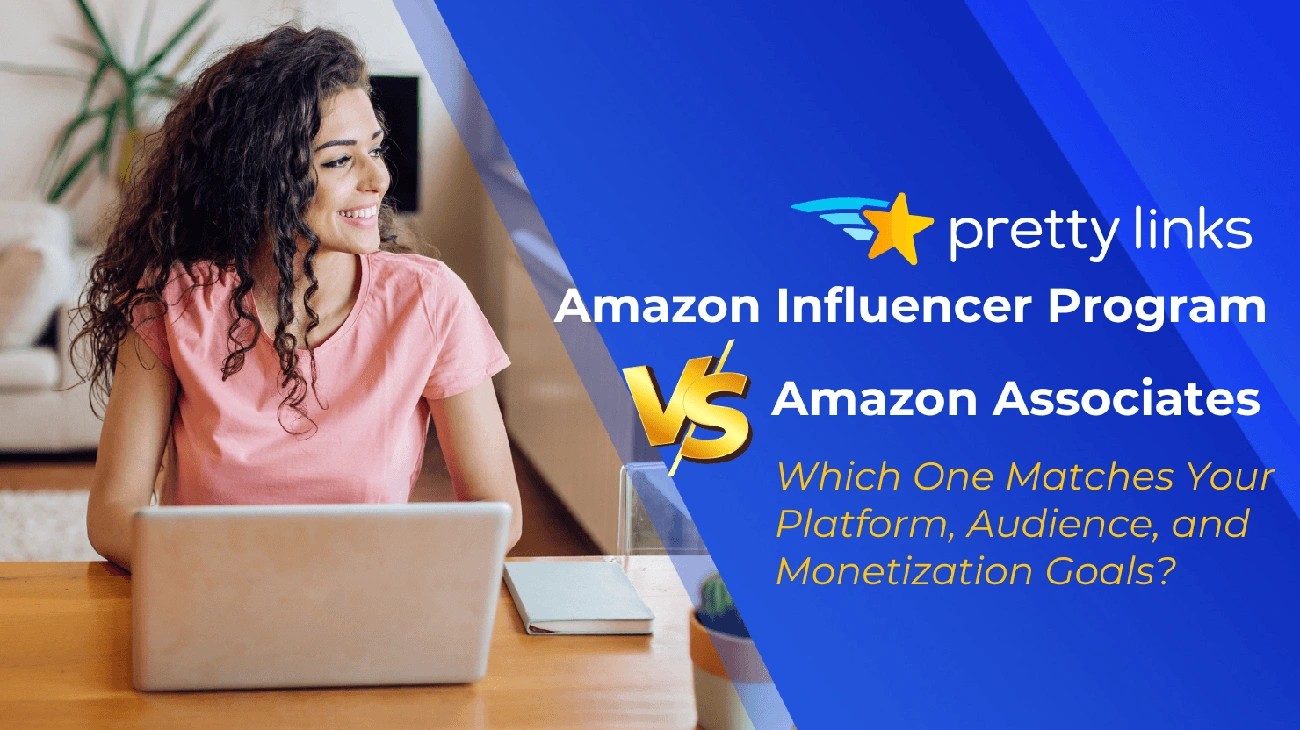
Image Source: Pretty Links
The Amazon Influencer Program has become a powerful monetization tool for social media content creators by using the massive reach of the world’s largest online retailer since its launch in 2017[7].
What is Amazon Influencer Program
The Amazon Influencer Program works as an extension of the Amazon Associates (affiliate) program. Content creators with strong social media followings get their own customizable space on Amazon [22]. They can set up personalized storefronts with unique vanity URLs () to curate and recommend products from their content amazon.com/shop/handle[22]. We used this to create a direct link between influencer recommendations and Amazon’s trusted e-commerce system.
Key Features of Amazon Influencer Program
The program looks at engagement quality instead of just counting followers:
- You need an active YouTube, Instagram, TikTok, or Facebook account [23]
- Instagram and Facebook accounts must be business profiles [23]
- Your application depends on follower count and engagement metrics [23]
The program gives creators several benefits:
- You get personalized storefronts with profile images and custom banners [7]
- There’s a chance to earn through short-form video content ($25-$100 per approved video) [7]
- Creator Stars program offers more benefits as you move up from Bronze to Silver, Gold, and Platinum levels [7]
Pricing of Amazon Influencer Program
Commission rates match Amazon’s affiliate program and vary by product category:
- Amazon Games leads with 20% commission [24]
- Luxury Beauty products earn 10% [24]
- Other categories range between 1-10% based on what you sell [25]
Platforms like Rupa give creators more freedom. They help turn followers into paying customers through digital products without relying on commission rates or marketplace rules.
Shopify
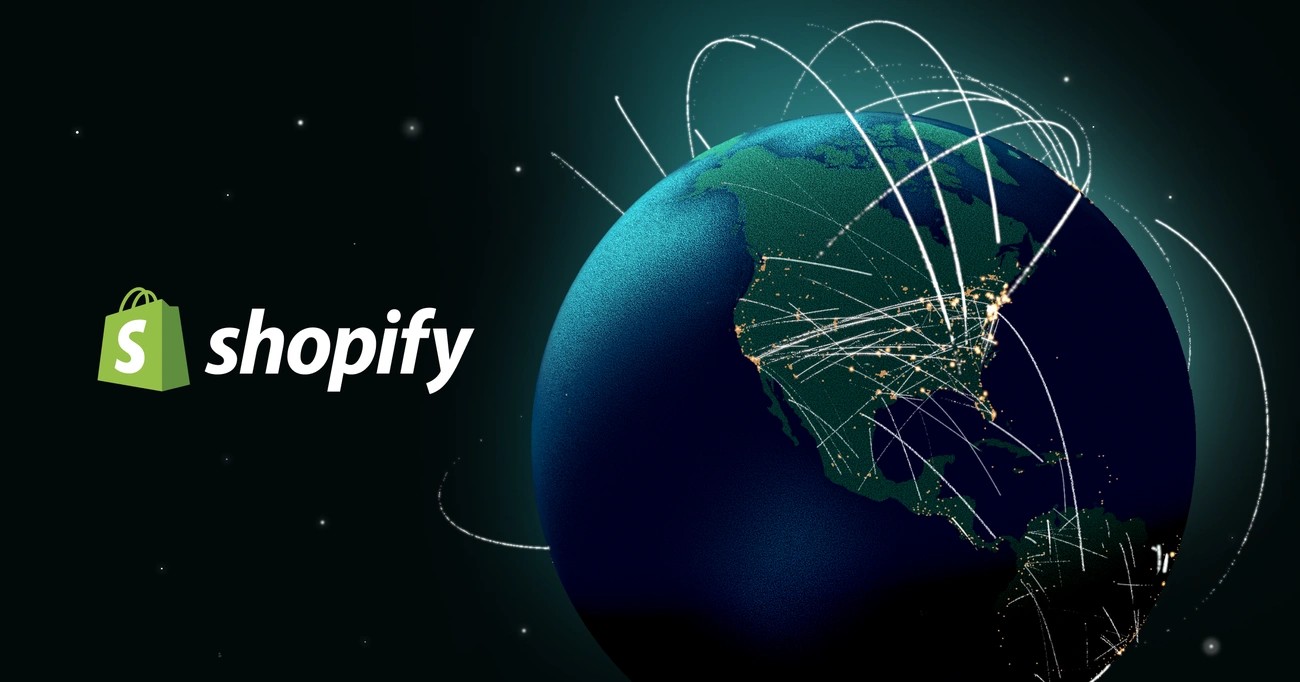
Image Source: www.shopify.com
Shopify helps creators sell products directly to their audience without depending on social media algorithms. It’s a powerful monetization tool that works beyond regular social platforms.
What is Shopify
Millions of brands trust Shopify as their complete commerce platform to sell, ship, and process payments anywhere [26]. The platform works great for creators who sell physical or digital products. You can build online stores without technical knowledge and scale your business as it grows [27].
Key Features of Shopify
Shopify gives you these powerful capabilities:
- Customizable storefronts with 100+ mobile-friendly themes [27]
- Social selling tools, including Linkpop—a commerce-first link for social media bios [26]
- Integrated sales channels to sell wherever your audience is [28]
- Secure payment processing with multiple gateway options [27]
- Detailed analytics to track performance and customer behavior [29]
Pricing of Shopify
Shopify’s current plans include:
- Simple: (billed yearly) for solo entrepreneurs $29/month[9]
- Shopify (Grow): $79/month (billed yearly) for small teams [9]
- Advanced: $299/month (billed yearly) for scaling businesses [9]
- Plus: $2,300/month for complex businesses [9]
Shopify stands out for physical products, but creators who sell digital courses often choose Rupa. They prefer Rupa’s simpler setup and specialized creator features that don’t require learning complex e-commerce systems.
ConvertKit
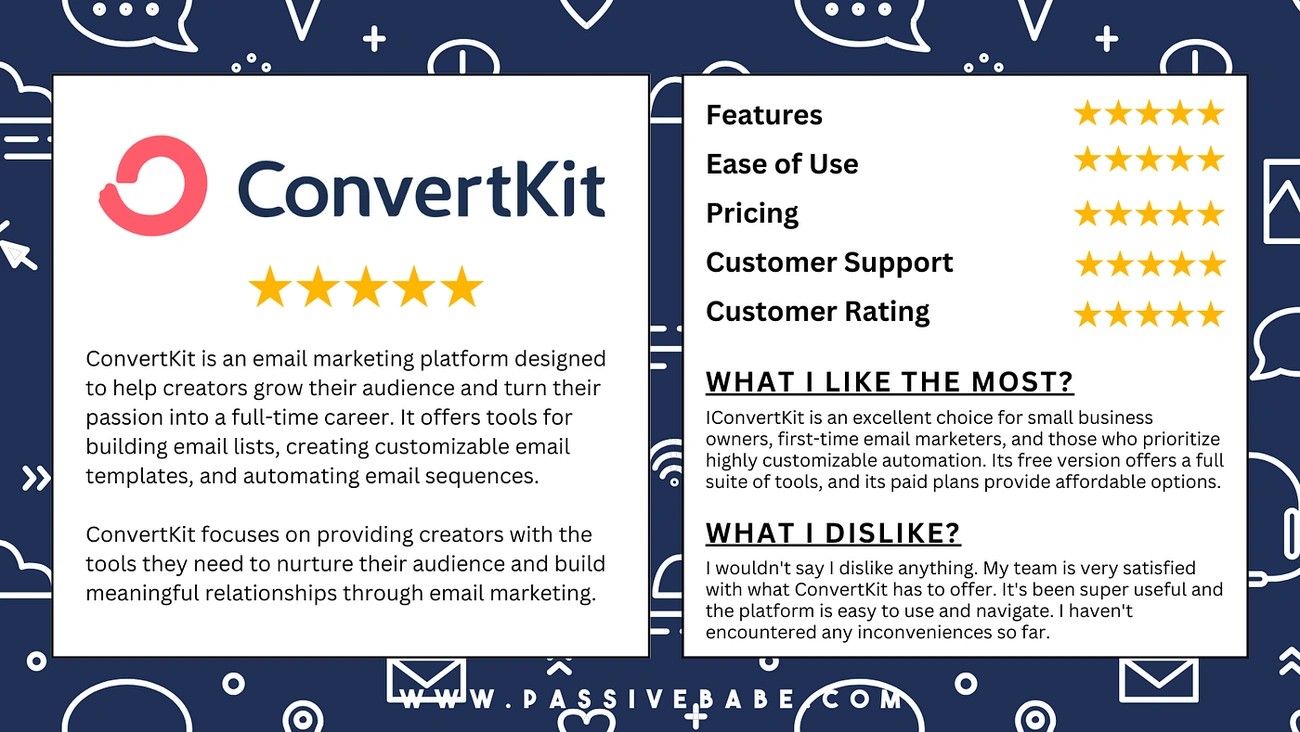
Image Source: Medium
Email continues to be a powerful monetization tool for creators in 2025. ConvertKit has emerged as a solution built specifically for content professionals rather than businesses.
What is ConvertKit
ConvertKit (now known as Kit since 2024) is an email marketing platform that creators love. Bloggers, YouTubers, podcasters, and digital product sellers find it perfect for their needs [10]. The platform stands out from typical marketing tools because it has an easy-to-use design. Creators can spend more time creating content instead of dealing with complex campaigns [10].
Key Features of ConvertKit
Creators get access to several powerful features:
- Visual automation builder that lets you drag and drop elements [30]
- Unlimited landing pages and customizable opt-in forms [31]
- Smart subscriber tagging and segmentation that targets your message [10]
- Direct selling of digital products through commerce integration [32]
- Creator Network that connects you with other content professionals [32]
ConvertKit makes it simple for creators to generate income through paid newsletters and digital products without complicated technical setup.
Pricing of ConvertKit
ConvertKit keeps pricing simple with three tiers:
- Newsletter (Free): You get unlimited landing pages and forms for up to 10,000 subscribers [33]
- Creator: with unlimited automations and sequences $29/month for 1,000 subscribers[31]
- Creator Pro: $59/month for 1,000 subscribers includes a newsletter referral system and advanced reporting [31]
All the same, creators who want to expand beyond email and build complete digital products should look at Rupa. It helps turn followers into paying customers through courses, challenges, and memberships.
Thinkific
Image Source: Thinkific
Thinkific has emerged as a powerful monetization tool that helps creators turn their expertise into expandable digital products through customization and analytics.
What is Thinkific
This online learning commerce platform enables businesses to create and sell courses, communities, memberships, and other digital learning products. The 11-year old platform has helped over 35,000 customers in more than 100 countries generate $3.70 billion through their digital offerings [34]. The platform caters to three main creator segments: subject matter experts, professional training businesses, and companies that want to broaden their revenue streams [34].
Key Features of Thinkific
The platform packs several powerful features for course creators:
- AI-powered tools that convert ideas into well-laid-out course outlines [35]
- Drag-and-drop course builder that needs no technical expertise [36]
- Built-in analytics to measure engagement, revenue, and performance metrics [35]
- Learning recommendation systems to guide students through structured paths [35]
- Branded mobile apps that create custom learning environments [35]
Pricing of Thinkific
The platform’s pricing tiers include:
- Basic: $49/month ($36/month billed yearly) [2]
- Start: $99/month ($74/month billed yearly) [2]
- Grow: $199/month ($149/month billed yearly) [2]
- Plus: Custom pricing to meet enterprise needs [2]
Thinkific works best for established businesses, yet individual creators often choose Rupa because it offers a simpler path to convert followers into paying customers without the complexity.
Circle

Image Source: circle.so
Monetization tools based on community interaction are becoming more popular. Circle stands out as a platform where creators can build engaged audiences while generating revenue.
What is Circle
Circle serves as a comprehensive community platform that creators, educators, and businesses use to build thriving online spaces. The platform provides a branded environment where creators host discussions, courses, events, and monetized content in one place [8]. Two former Teachable employees launched Circle to serve creator communities that focus on training and learning [37].
Key Features of Circle
Circle’s platform comes packed with powerful features for community builders:
- Branded spaces let you host discussions, chats, events, and share content
- Flexible monetization tools help manage memberships, courses, and exclusive content
- Built-in communication tools include automated community digests and email marketing
- A mobile app keeps members connected on the go
- White-label customization options give you control over branding [8]
The platform blends with Zapier, Google Analytics, and other tools to optimize workflows.
Pricing of Circle
Circle’s pricing structure includes four main tiers:
- Basic: USD 49.00/month includes simple features (up to 100 members) [38]
- Professional: USD 89.00/month supports unlimited members (most popular) [39]
- Business: USD 219.00/month adds automation workflows [38]
- Enterprise: USD 399.00/month includes custom SSO and priority support [38]
Creators who want simpler monetization without managing a community might prefer Rupa. This platform helps turn followers into paying customers through digital products.
Calendly
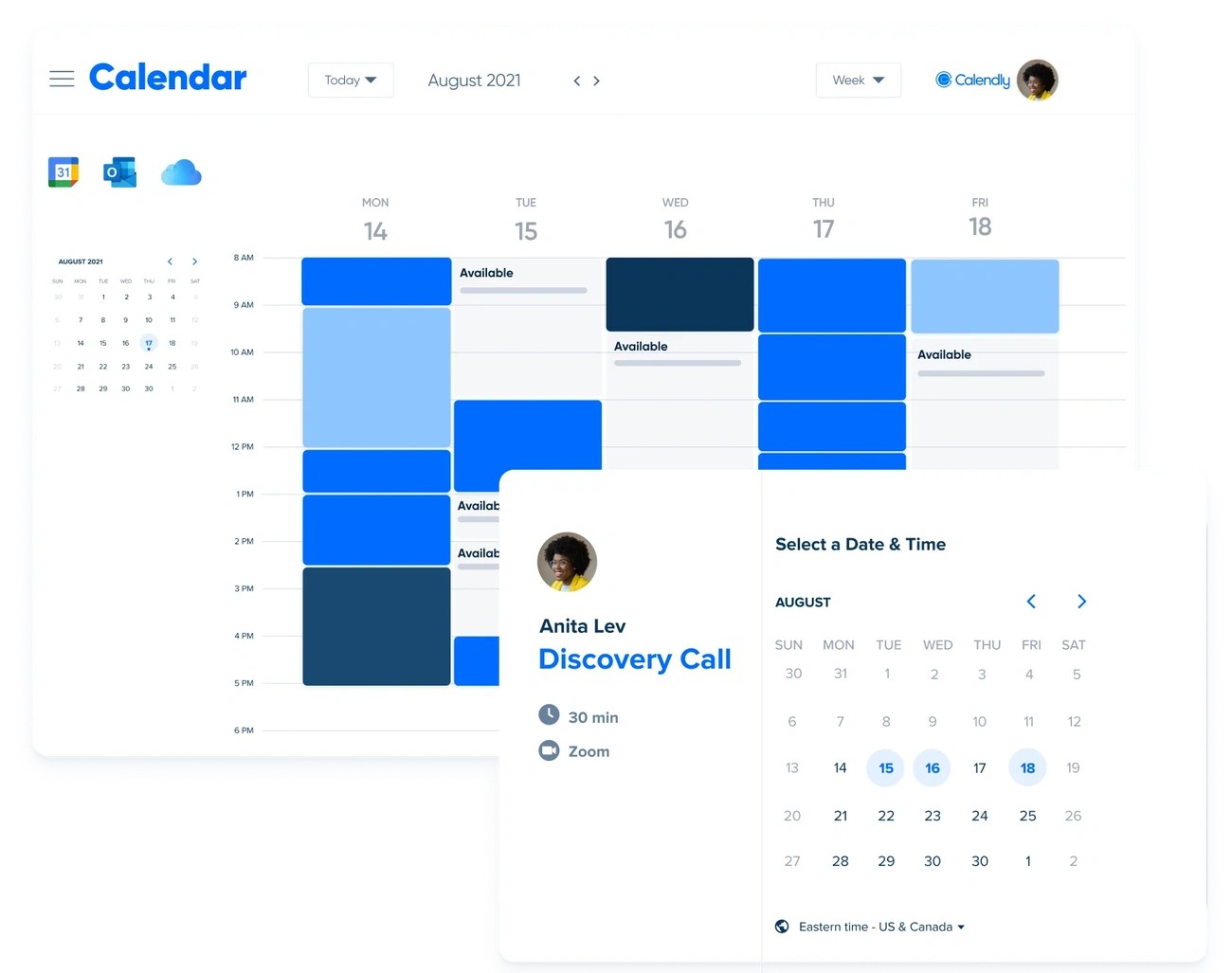
Image Source: Calendly.com
A creator’s earnings depend heavily on scheduling efficiency. Calendly has become a vital monetization tool that helps turn time management into revenue opportunities.
What is Calendly
Calendly works as a scheduling automation platform that removes the hassle of back-and-forth emails during appointment booking. The service syncs with your calendars and shows only available time slots to potential clients. This streamlines the entire booking process [4]. The tool serves more than 20 million users worldwide [40], and 86% of Fortune 500 companies rely on it [4].
Key Features of Calendly
The platform streamlines scheduling with these features:
- Sync up to six calendars to avoid double-booking [41]
- Create custom booking pages with unique URLs [40]
- Connect with 100+ tools like video conferencing, payment processors, and CRMs [4]
- Send automatic reminders and follow-ups to minimize no-shows [42]
- Access scheduling through mobile apps [42]
Creators can use Calendly’s payment integrations with Stripe and PayPal as a complete time and revenue management system [43].
Pricing of Calendly
Calendly offers four pricing tiers:
- Free: Always free – one event type, single calendar connection [41]
- Standard: $10/month (billed yearly) – unlimited event types, six calendars [41]
- Teams: $16/month (billed yearly) – adds Salesforce integration, lead routing [41]
- Enterprise: Custom pricing (starts at $15,000/year) – has SSO, domain control [41]
Calendly excels at booking appointments. Creators who need complete monetization options often combine it with Rupa to convert followers into paying customers through digital products.
CapCut
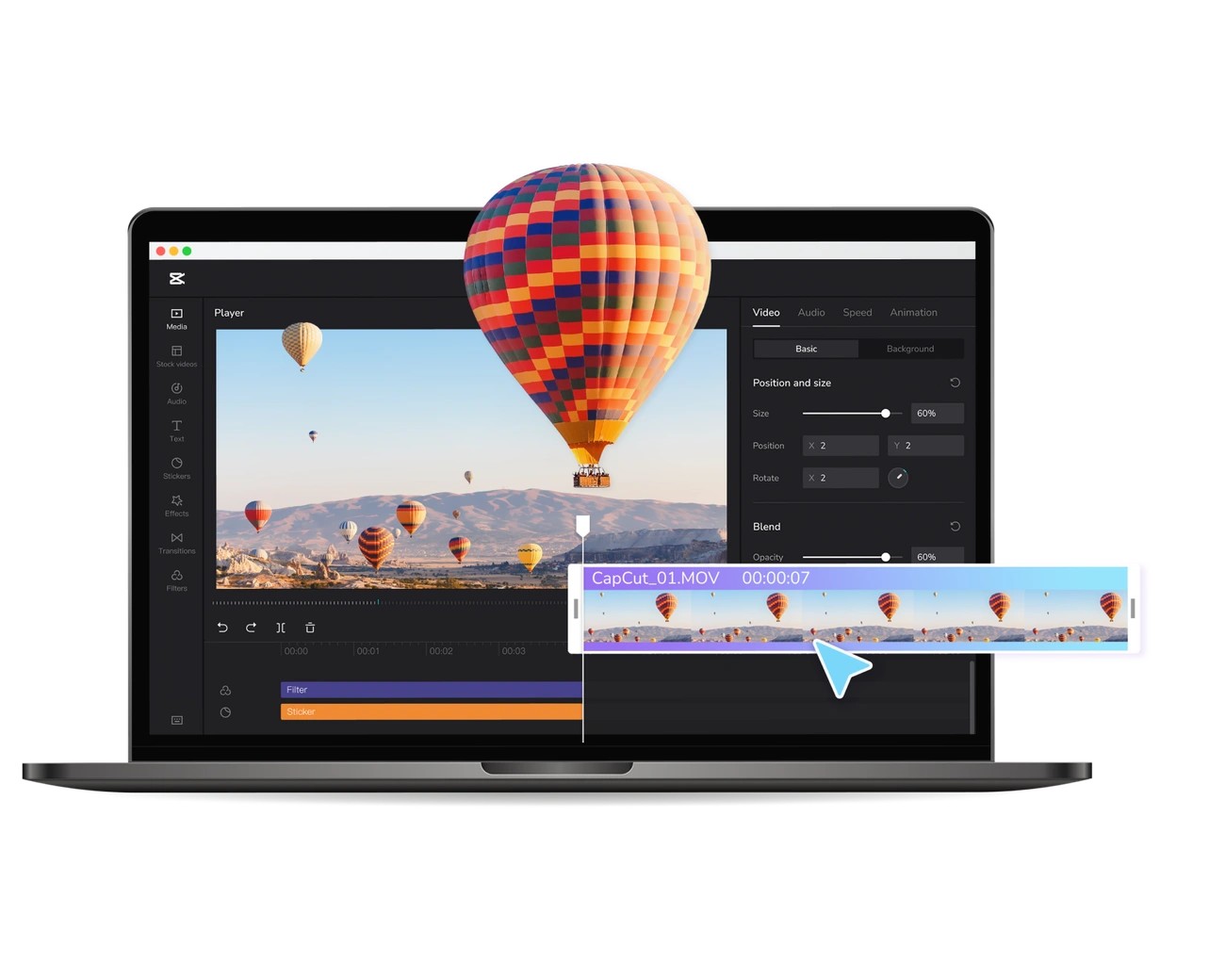
Image Source: CapCut
CapCut has become a powerful tool in the last few years that gives creators the ability to produce professional-quality videos for social media monetization.
What is CapCut
ByteDance, TikTok’s parent company, created this AI-powered, all-in-one creative platform with detailed video editing and image design capabilities [44]. The platform works as a mobile app for Android and iOS, a desktop application, and a web version [44]. More than 20 million users worldwide [45] use this platform because of its easy-to-use interface.
Key Features of CapCut
CapCut goes beyond simple editing functions to offer:
- AI-powered tools with auto-captions, text-to-speech, and background removal [46]
- Ready-to-use video templates that speed up quick projects [46]
- A rich collection of royalty-free music and sound effects [46]
- Direct exports to social platforms like TikTok for optimized sharing [3]
- Advanced features like split scene functionality and color correction tools [46]
Pricing of CapCut
CapCut’s pricing comes in two options:
- Free Version: Simple editing features with some limitations [47]
- CapCut Pro: $7.99/month or $74.99/year for premium features [47]
CapCut Pro users get 4K resolution exports, no watermarks, AI-driven tools, and premium effects [47]. Creators looking to earn income without depending on algorithms can use Rupa as a complementary tool to turn their followers into paying customers through digital products.
Repurpose.io
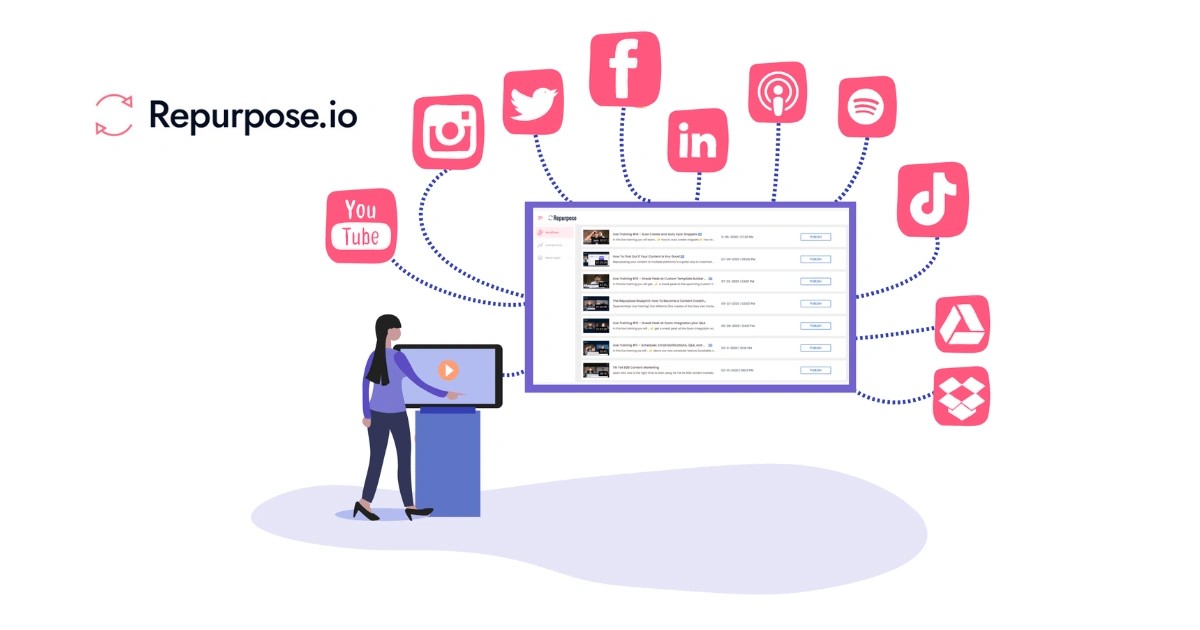
Image Source: repurpose.io
Content repurposing is a vital monetization tool that helps creators maximize their reach on different platforms efficiently.
What isRepurpose.io
is a web-based platform that simplifies content transformation on social media channels of all types. The tool converts long-form content like podcasts, videos, or livestreams into shorter formats optimized for each platform Repurpose.io[48]. Creators can create content once and share it everywhere [49]. This saves them up to 20 hours per week through automatic cross-platform posting [11].
Key Features ofRepurpose.io
The platform makes content creation simple with these features:
- Automated processes that connect TikTok and YouTube to multiple destinations [50]
- Quick watermark removal from videos [51]
- Custom publishing schedules with up to five daily time slots [52]
- Video resizing that matches each platform’s requirements [11]
- Templates you can customize for video-to-video and audio-to-video conversions [50]
Pricing ofRepurpose.io
offers two pricing tiers:Repurpose.io
- Content Marketer: $35.00/month or $29.08/month billed annually ($349.00/year) [48]
- Agency: $149.00/month or $124.17/month billed annually ($1490.00/year) [48]
Both plans give you unlimited published videos [48]. The Content Marketer plan supports up to 5 accounts per channel, while the Agency plan lets you manage up to 20 [49].
New users can try the platform with a 14-day free trial and publish 10 videos without any cost [51].
Squarespace

Image Source: Squarespace
Squarespace helps creators take control of their digital presence as a versatile monetization tool.
What is Squarespace
Squarespace works as an all-in-one website building platform that helps creators build a professional online presence without coding knowledge. The platform enables users to create beautiful websites through professionally designed templates that match their personal branding [12]. We used it as a foundation for creators to showcase their work, sell products, and connect directly with audiences.
Key Features of Squarespace
Squarespace provides reliable tools that creators will find valuable:
- Portfolio features with customizable layouts for showcasing work [12]
- Built-in ecommerce functionality for selling physical products, digital downloads, and services [12]
- Email marketing capabilities for direct audience communication [12]
- AI-powered content generation to simplify website creation [53]
Pricing of Squarespace
Squarespace provides four main plans:
- Basic: $16/month (billed annually) with basic website features and 2% transaction fees [54]
- Core: $23/month (billed annually) with 0% transaction fees and advanced analytics [54]
- Plus: $39/month (billed annually) with lower payment processing rates [54]
- Advanced: $99/month (billed annually) with minimum processing fees [54]
Creators who focus on digital products rather than website building might prefer Rupa’s efficient approach to monetize their expertise without the technical learning curve.
The Leap
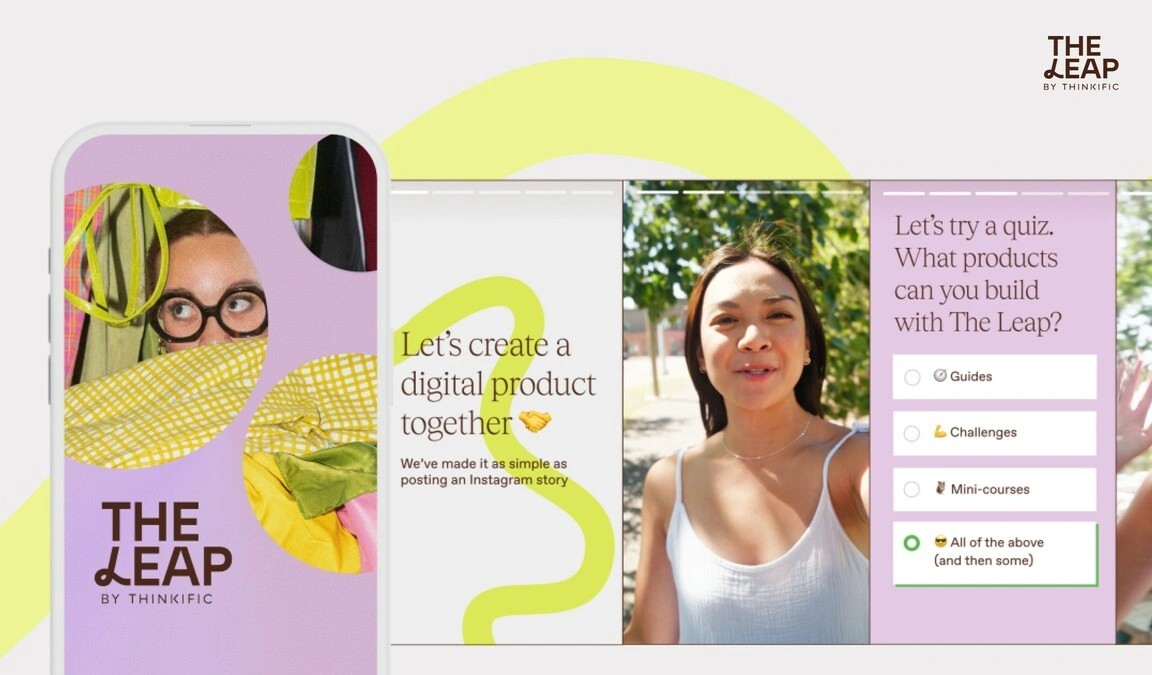
Image Source: PR Newswire
The Leap brings AI-powered simplicity to the monetization tools digital world. Creators can now turn their knowledge into sellable digital products faster than ever.
What is The Leap
Thinkific’s free AI-powered digital product builder and link-in-bio storefront, The Leap, launched in October 2023 [55]. The platform attracted 6,500 users in its first month, and these creators built 5,000 digital products [13]. Creators can now make money from their expertise through mini-courses, guides, tutorials, and challenges without depending on unpredictable algorithms [56].
Key Features of The Leap
The platform’s creator-focused features shine through:
- An AI-powered digital product builder that creates quality drafts in minutes [13]
- A mobile-ready link-in-bio store that connects social traffic to your custom storefront [57]
- Built-in email marketing automation that captures leads [55]
- A “Book My Time” native calendar feature to sell coaching services [56]
- A theme builder with 200+ combinations of layouts, colorways, and designs [58]
The platform also comes with live audience analytics and flexible payment options such as discount codes and one-click payments [56].
Pricing of The Leap
The Leap stands out by being completely free without platform transaction fees [55]. Users just pay Stripe’s standard 2.9% payment processing fee [55]. This strategy lines up with their task to help creators succeed in the creator economy [59].
Rupa serves as an alternative with its AI Product Generator. The tool turns existing content into courses or challenges instantly and uses automated marketing tools to simplify funnels.
Comparison Table
| Tool | Primary Function | Key Features | Pricing Structure | Target Users/Eligibility |
| YouTube Partner Program | Video monetization | – Multiple revenue streams- Creator support- Content protection | 55% creator revenue share (long-form)45% creator revenue share (Shorts) | 500 subscribers + 3K watch hours or 3M Shorts views |
| TikTok Creator Fund | Content compensation | – View-based payments- Creator Rewards Program- Monthly payouts | $4-$8 per 1,000 views (Creator Rewards)$0.02-$0.04 per 1,000 views (Original Fund) | 10K followers + 100K views in 30 days |
| Instagram Live Badges | Live streaming tips | – Three badge tiers- 90-day supporter recognition- Direct fan support | $0.99, $1.99, $4.99 badge tiers100% revenue after fees | 18+ years, 10+ followers |
| Facebook Ad Breaks | Video advertising | – Multiple ad formats- Live video monetization- Revenue sharing | 55% revenue share$2-$5 CPM typical rate | 10K followers + 600K minutes viewed |
| Patreon | Membership platform | – Multiple tier options- Video hosting- Community tools | 10% platform fee + payment processing fees | Not mentioned |
| Amazon Influencer | Product recommendations | – Custom storefronts- Video content earnings- Creator Stars program | 1-20% commission rates varying by category | Active social media presence |
| Shopify | E-commerce platform | – Customizable storefronts- Social selling tools- Analytics | Basic: $29/monthGrow: $79/monthAdvanced: $299/month | Not mentioned |
| ConvertKit | Email marketing | – Visual automation- Landing pages- Commerce integration | Free: Up to 10K subscribersCreator: $29/monthPro: $59/month | Content creators |
| Thinkific | Course platform | – AI course builder- Analytics- Mobile apps | Basic: $49/monthStart: $99/monthGrow: $199/month | Subject matter experts |
| Circle | Community platform | – Branded spaces- Monetization tools- Communication features | Basic: $49/monthPro: $89/monthBusiness: $219/month | Community builders |
| Calendly | Scheduling automation | – Calendar sync- Payment integration- Automated reminders | Free: Basic featuresStandard: $10/monthTeams: $16/month | Not mentioned |
| CapCut | Video editing | – AI-powered tools- Templates- Royalty-free music | Free versionPro: $7.99/month | Content creators |
| Repurpose.io | Content repurposing | – Simplified processes- Custom scheduling- Video resizing | Content Marketer: $35/monthAgency: $149/month | Content marketers |
| Squarespace | Website builder | – Portfolio features- E-commerce tools- Email marketing | Basic: $16/monthCore: $23/monthPlus: $39/month | Creators and businesses |
| The Leap | Digital product builder | – AI product builder- Link-in-bio store- Email automation | Free (2.9% payment processing fee) | Digital product creators |
Conclusion
The right monetization tools make all the difference between struggling creators and those earning $10K+ monthly. This piece explores 15 proven platforms that successful creators use to build eco-friendly income streams beyond unpredictable algorithms.
Successful creators don’t put all their eggs in one basket. They mix different tools to create various income sources. A creator might use YouTube Partner Program for ad revenue while selling courses through Thinkific or running a membership on Patreon.
On top of that, it takes smart creators to understand their audience relationship’s value. Platform-based monetization works well, but direct connections through email lists (via ConvertKit) or your own website (via Squarespace) protect you against algorithm changes.
Rupa offers a fresh alternative for creators who are tired of platform dependency. The platform helps change your followers into paying customers through digital products without complex funnels or technical setup. Its AI Product Generator turns your existing content into sellable courses or challenges right away – perfect for creators who want to monetize but struggle with the process.
The best approach mixes multiple tools based on your content style and audience priorities. You can start with one or two platforms that match your strengths and expand as you build momentum.
Note that algorithms change, but your expertise stays valuable. Your focus should be on building monetization systems that work with or without platform support. Traditional methods like YouTube ads and affiliate marketing or newer options like Rupa’s digital product tools can work well – the key is to start today instead of waiting for the perfect moment.
Which monetization tools do you use now? Have you turned your content into digital products yet? Start now and you’ll soon join creators earning serious income in 2025.
Key Takeaways
Smart creators in 2025 are building sustainable $10K+ businesses by diversifying beyond single-platform dependency and leveraging proven monetization tools strategically.
• Diversify income streams across multiple platforms – Successful creators combine YouTube ads, affiliate marketing, email lists, and digital products rather than relying on one revenue source.
• Own your audience relationship through direct channels – Build email lists via ConvertKit and personal websites to protect against algorithm changes and platform policy shifts.
• Platform-based monetization has significant limitations – YouTube takes 45% of revenue, TikTok pays only $0.02-$0.04 per 1,000 views, and Facebook Ad Breaks ends in August 2025.
• Digital products offer algorithm-proof income potential – Tools like Rupa and The Leap help transform existing content into courses and challenges without complex technical setup.
• Start with 1-2 tools that match your strengths, then expand – Focus on platforms aligned with your content style and audience preferences before adding complexity.
The creator economy rewards those who take action over perfection. Whether you choose traditional monetization methods or explore newer digital product platforms, the key is starting today rather than waiting for ideal conditions. Your expertise has value—the question is how quickly you’ll turn it into sustainable income.
FAQs
Q1. What are the updated YouTube monetization requirements for 2025? To monetize on YouTube in 2025, creators need 500 subscribers, 3 public videos in the last 90 days, and either 3,000 watch hours in the past year or 3 million Shorts views in the last 90 days.
Q2. Which social media platform offers the highest earning potential for creators in 2025? YouTube remains the top-earning platform for creators in 2025, particularly for long-form video content due to its robust ad revenue sharing model.
Q3. What are TikTok’s monetization criteria in 2025? TikTok requires creators to be 18 or older, have at least 10,000 followers, accumulate 1,000 video views in the past 30 days, and post a minimum of 3 videos within the last month to qualify for monetization.
Q4. How has YouTube’s monetization policy changed for 2025? YouTube’s 2025 policy update aims to limit mass-produced and repetitive content, including AI-generated material. Creators are now required to add original value, such as commentary, to their content to qualify for monetization.
Q5. What are some effective ways for creators to diversify their income streams in 2025? Successful creators in 2025 are combining multiple monetization tools, such as YouTube ad revenue, affiliate marketing through programs like Amazon Influencer, membership platforms like Patreon, and selling digital products via platforms like Thinkific or Rupa.
References
[1] – https://www.ranktracker.com/blog/facebook-ad-breaks-overview-and-revenue-potential/
[2] – https://www.learningrevolution.net/thinkific-pricing/
[3] – https://influencermarketinghub.com/what-is-capcut/
[4] – https://calendly.com/
[5] – https://support.patreon.com/hc/en-us/articles/203913559-How-to-set-up-paid-tiers-and-benefits
[6] – https://en.wikipedia.org/wiki/Patreon
[7] – https://loudcrowd.com/blog/amazon-influencer-program-everything-you-need-to-know/
[8] – https://circle.so/blog/best-community-platforms
[9] – https://www.shopify.com/pricing
[10] – https://www.elegantthemes.com/blog/marketing/convertkit-review
[11] – https://repurpose.io/for-video-creators/
[12] – https://www.squarespace.com/websites/create-a-portfolio
[14] – https://en-gb.facebook.com/audiencenetwork/news-and-insights/video-monetization-update
[15] – https://www.socialmediaexaminer.com/how-to-monetize-facebook-video-facebook-ad-breaks/
[16] – https://www.ranktracker.com/blog/advantages-of-facebook-ad-breaks-over-competitors/
[17] – https://www.facebook.com/business/help/1884527914934148
[18] – https://www.patreon.com/
[19] – https://ifttt.com/explore/how-to-make-money-on-patreon
[20] – https://support.patreon.com/hc/en-us/articles/11111747095181-Creator-fees-overview
[21] – https://www.patreon.com/pricing
[22] – https://affiliate-program.amazon.com/help/node/topic/GTP6NKQ2GXPZL7AT
[23] – https://affiliate-program.amazon.com/influencers
[24] – https://prochefkitchentools.com/blogs/tips/amazon_influencers_diverse_commission_rates_revealed
[25] – https://www.influencer-hero.com/blogs/amazon-influencer-commission-rates
[26] – https://www.shopify.com/creators
[27] – https://www.shopify.com/blog/best-ecommerce-platforms
[28] – https://www.shopify.com/products
[29] – https://www.firstpier.com/resources/shopify-features-list
[30] – https://kit.com/features/automations
[31] – https://kit.com/pricing
[33] – https://www.emailtooltester.com/en/reviews/convertkit/pricing/
[34] – https://www.thinkific.com/pricing/
[35] – https://www.thinkific.com/features/courses/
[36] – https://www.thinkific.com/blog/sell-online-courses/
[37] – https://bettermode.com/blog/circle-so-alternatives
[38] – https://sellcoursesonline.com/circle-pricing
[39] – https://www.courseplatformsreview.com/blog/circle-pricing/
[40] – https://calendly.com/blog/getting-started-guide
[41] – https://calendly.com/pricing
[42] – https://calendly.com/scheduling
[43] – https://calendly.com/blog/how-to-make-scheduling-for-consultants-more-efficient
[44] – https://www.capcut.com/activities/subscribe/
[45] – https://www.clixie.ai/blog/capcut-vs-other-video-editing-apps-which-one-reigns-supreme
[46] – https://www.capcut.com/resource/capcut-tutorial-for-beginners
[47] – https://www.miracamp.com/learn/capcut/price-free-vs-capcut-pro
[48] – https://www.castmagic.io/software-comparisons/otter-ai-vs-repurpose-io
[49] – https://beacons.ai/i/blog/repurpose-vs-supercreator
[50] – https://www.castmagic.io/software-review/repurpose-io
[51] – https://repurpose.io/
[52] – https://repurpose.io/blog/new-auto-publish-schedule-repurpose-content-release/
[53] – https://www.squarespace.com/feature-index
[54] – https://www.squarespace.com/pricing
[55] – https://www.theleap.co/comparison/the-leap-vs-beacons/
[56] – https://www.theleap.co/blog/creator-economy-platforms/
[57] – https://www.theleap.co/
[58] – https://www.theleap.co/features/
[59] –https://www.thinkific.com/blog/creator-economy-platforms/
